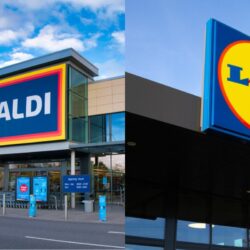HMV last week revealed its UK sales figures – the first since being bought out of administration by Hilco. The new owner has made some considerable changes: trimming the store estate, launching apps and opening a new Oxford Street flagship. As a result, both like-for-likes and in-store conversion rates have improved.
But even now, the HMV website is not transactional, which means customers will be off to competitor websites which stock a reasonable range.
I still question how such a dominant retailing icon could come to the brink of extinction. How it could have missed the online boat not just once but twice? And that‘s with a new owner. By persisting with an offline-only retail sales strategy, it‘s condemning itself to failure.
But despite all its woes, it‘s still a great brand with the potential to become a major player in the wider field of audio and visual entertainment. However, it needs to act fast to grab a place in what‘s already a congested online marketplace.
In contrast, Sports Direct, which has taken over the original HMV site on Oxford Street, is one of the most successful money-making machines the high street has ever seen. And interestingly, whilst the layout of the ground floor is a welcome departure from the cramped and crowded souk-style bazaar consumers have learned to put up with, the other floors are sadly reminiscent of the standard Sports Direct décor.
It‘s as if the designers have been instructed to tart up the visibility purely at ground level, on the basis that once inside, the customers will seemingly put up with the lacking in-store experience in the rest of the building.
Despite this sadly traditional aesthetic, Sports Direct‘s consumers keep coming back. Why? Probably because the sports giant is doing what HMV failed to do: maintain and focus a presence where its customer base resides. For example, Sports Direct is now expanding in Australia and New Zealand, where sports is a way of life.
That said, its poor in-store offering is not going to cut it in the long run. In order to attract a new, more up-market and affluent audience, the brand needs to develop a richer in-store experience. That way it will increase its margins and consumers might get a marginally more enjoyable shopping experience.
Marks & Spencer, on the other hand, has the décor, service ethics and attitude that Sports Direct lacks, but there‘s a disappointing familiarity about the merchandise. Despite all the protestations and the glossy advertising featuring people consumers can all apparently relate to, the goods don‘t seem to change much – and the brand has received plenty of criticism for it.
Whilst we can all attest to the need for sustainability, are we really engaged with it enough to buy the same safe apparel every season? The answer is no – and proven by its 12th consecutive quarter of declining clothing sales.
M&S could do with a bit of Mike Ashley-style entrepreneurialism and a dash of Philip Green product range flare to drag its clothing into the twenty-first century. It would also benefit from taking note of what some of the big international fashion brands are doing. For example, something that has made H&M such a success is the brand‘s regular celebrity designer collaborations.
There‘s no quick and easy way to right the wrongs of each of these retailers but I do have one formula. Focus on your existing target audience and make sure you are creating an engaging shopper experience, in-store, online and on the move – or else risk getting left behind. No brand has ever succeeded by trying to please everyone.

















